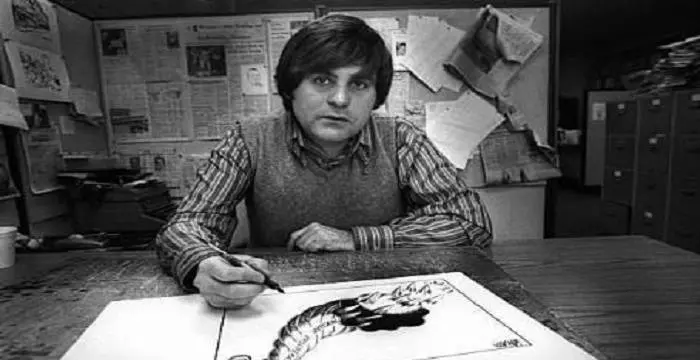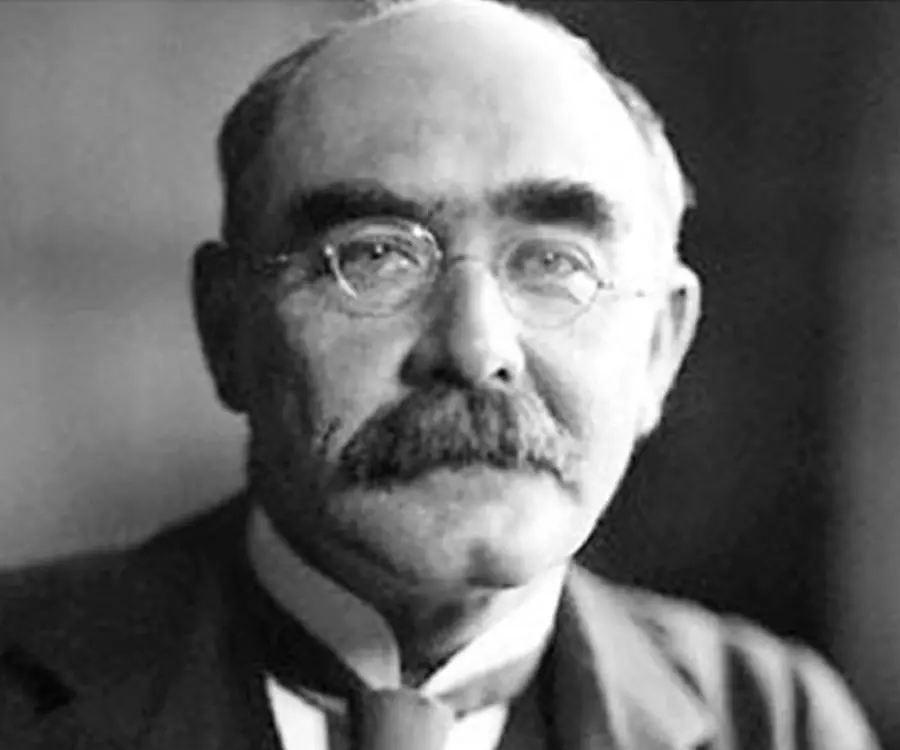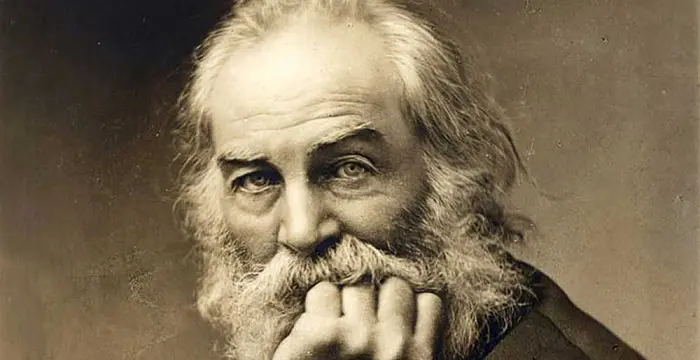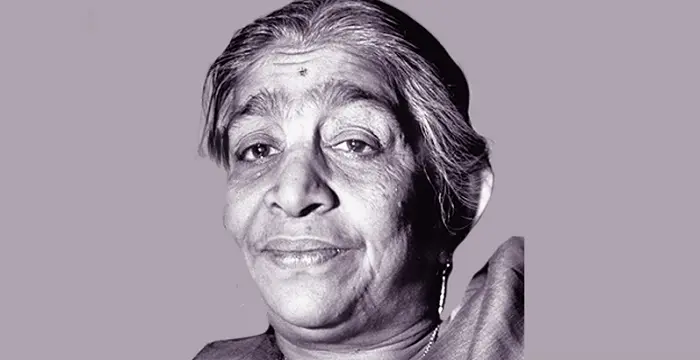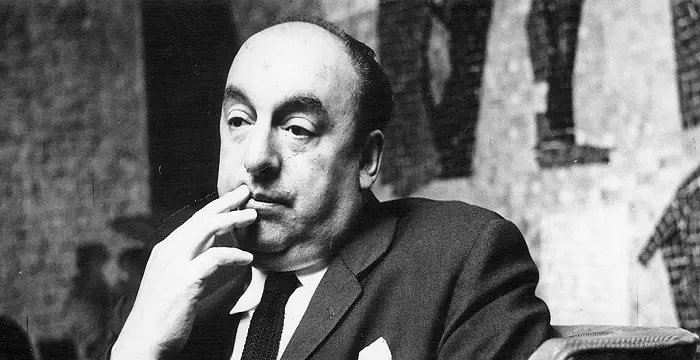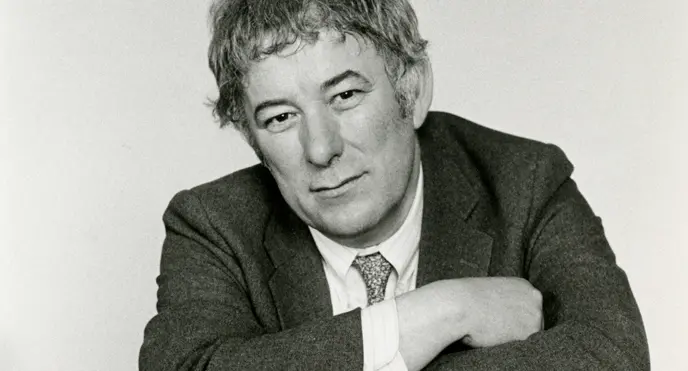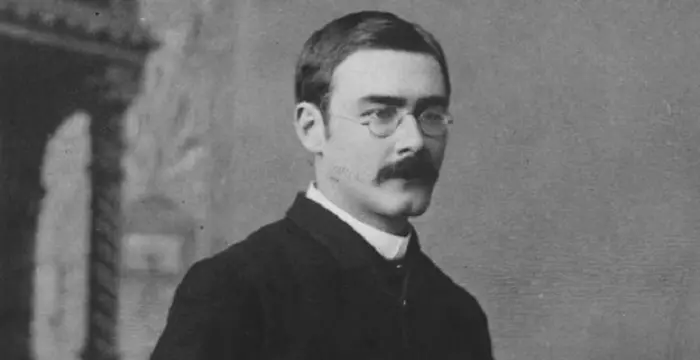
Rudyard Kipling - Poets, Life Achievements and Personal Life
Rudyard Kipling's Personal Details
Rudyard Kipling was a famous English poet and novelist
| Information | Detail |
|---|---|
| Birthday | December 30, 1865 |
| Died on | January 18, 1936 |
| Nationality | British |
| Famous | Nobel Laureates In Literature, Writers, Poets, Author, Poets |
| Spouses | Carrie Balestier |
| Siblings | Alice |
| Childrens | Elsie Kipling, John Kipling, Josephine Kipling |
| Universities |
|
| Birth Place | India |
| Gender | Male |
| Father | (John) Lockwood Kipling |
| Mother | Alice Kipling (née MacDonald) |
| Sun Sign | Capricorn |
| Born in | India |
| Famous as | Author & Poet |
| Died at Age | 70 |
// Famous Author
Joyce Meyer
Joyce Meyer is a Christian author and speaker. This biography provides detailed information about her childhood, life, achievements, works & timeline
Suze Orman
Suze Orman is an American television host, financial advisor, author and motivational speaker, famous for her ‘The Suze Orman Show’ on CNBC. This biography profiles her childhood, life, career, works, achievements and timeline.
Robert Graysmith
Robert Graysmith is an author best identified for his works on the ‘Zodiac Killer case’. Check out this biography to know about his childhood, family life, achievements and fun facts about him.
Rudyard Kipling's photo
Who is Rudyard Kipling?
Joseph Rudyard Kipling was an English poet, short story writer and a novelist, chiefly remembered for his works for children and support for British imperialism. Born in British India in the middle of the nineteenth century, he was sent to England at the age of six for his education. Later he returned to India to begin his career as a journalist, but soon gave it up to return to his home country, where he concentrated full time on writing. After his marriage he lived for some years in Vermont, USA, before returning for good to England. He was a prolific writer whose children’s books are revered as classics of children’s literature. It is believed that at one point he was offered poet laureateship and on several occasions considered for knighthood, but he refused them. However, he accepted the Nobel Prize in Literature, which made him the first English writer to receive the honor.
// Famous Poets
Walt Whitman
Walt Whitman was an American poet, journalist and humanist. Read this brief biography to find more on his life & timeline.
Sarojini Naidu
Sarojini Naidu was an Indian freedom fighter and poet. Read this brief biography to find more on her life.
Pablo Neruda
Pablo Neruda was a Chilean poet, politician and Nobel laureate. Go through this biography to learn more about his profile, childhood, life and timeline.
Childhood & Early Life
Joseph Rudyard Kipling was born on 30 December 1865 in Bombay (Mumbai), then under British India. His parents named him after the Rudyard Lake in Staffordshire, where they had met for the first time.
His father, John Lockwood Kipling, was a sculptor and pottery designer from North Yorkshire. After his marriage to Alice MacDonald, the daughter of Reverend George Browne MacDonald, they moved to India where he was appointed a professor of architectural sculpture in the Jeejeebhoy School of Art.
Rudyard had a sister, also named Alice, three years junior to him. Like most other British children in India, they spent the greater part of the day with Indian nannies and servants, listening to the unforgettable stories they told in their native tongue and exploring local markets with them.
As a result, Rudyard became more proficient in their language than in English. But all these changed abruptly in 1871, when both the siblings were sent to live in a foster home in England to be educated under the British system.
Arriving in England in October, they put up with Captain Pryse Agar Holloway and his wife Sarah, who boarded children of British nationals serving in India in their home at Southsea, Portsmouth. Here he was admitted to a school, but found it hard to adjust. Life at the foster home was not easy either.
He not only faced cruelty and neglect at the hands of Mrs. Holloway, but every night she cross-examined him on his day’s activities and to save himself, he started telling lies. Later, he jokingly said, “this, I presume, is the foundation of my literary effort".
His only break came, when each Christmas he traveled to London to spend the holidays with his maternal aunt. Besides, he tried to find solace in literature, an activity not encouraged by Mrs. Holloway. Therefore, to mislead her he moved the furniture along the floor as he continued reading.
By 1876, eleven-year-old Kipling was almost on the verge of a nervous breakdown. Fortunately his mother was informed about this and in April 1877, she arrived in England to take away her children from the foster home. Much later in 1888, he wrote about his ordeal in ‘Baa Baa Black Sheep.’
In January 1878, Kipling was admitted to the United Services College, a boarding school at Westward Ho in Devon. Here he had to endure harsh discipline as well as bullying, but later developed close friendship with other boys, sharing practical jokes and pranks.
He also developed a good relationship with the headmaster, who encouraged him to write and made him the editor of the school magazine. In 1881, the poems he wrote for the magazine was published by his father as ‘Schoolboy Lyrics.’
On the completion of his schooling, he returned to India sometime in October 1882. That was because he was neither academically bright enough to get scholarships, nor could his parents afford university education.
Back to India
Immediately on his arrival to Bombay, Rudyard Kipling found his childhood memories rushing back. On moving around among the familiar sights and sounds, native words, whose meanings he did not know, began to tumble out of his mouth.
He now put up with his parents, then posted at Lahore and began his career as a copy editor for the ‘Civil and Military Gazette.’ His parents were not officially important, but still commanded certain respect. Therefore, he had access to the highest echelon of the British society.
Concurrently, he moved around in the native neighborhoods, absorbing the colorful life of the native Indians. Thus he had the opportunity to observe the whole spectrum of the social fabric. With an unstoppable urge to write, he now began to fill his notebook with light verses and prose sketches.
In the summer of 1883, he visited Shimla, a well-known hill station and the summer capital of India. He must have liked the place very much for from 1885 to 1888, he made yearly visit to the place. The town featured prominently in many stories he wrote for his newspaper.
In 1886, he had his first work, ‘Departmental Ditties’, a book of witty verses, published. Concurrently, he continued to write short stories, among which, at least thirty-nine were published in the Gazette between November 1886 and June 1887.
In November 1887, Kipling was transferred to Allahabad. Here he worked until early 1889 as an Assistant Editor at the Gazette’s sister paper, ‘The Pioneer.’ The period was literarily very productive.
In January 1888, he had his first book of short stories published from Calcutta (now Kolkata). Titled, ‘Plain Tales from the Hills’, it contained forty short stories, out of which twenty-eight were pre-published in the Gazette in 1886/1887.
Also in 1888, he had six other collections of short stories published. They were ‘Soldiers Three’, ‘The Story of the Gadsbys’, ‘In Black and White’, ‘Under the Deodars’, ‘The Phantom Rickshaw’, and ‘Wee Willie Winkie’. In all, they contained forty one stories, some of which were quite long.
During this period, he also traveled extensively in the western region of Rajputana as the special correspondent of ‘The Pioneer.’ The sketches he wrote during this period were later included in his 1889 publication ‘From Sea to Sea and Other Sketches, Letters of Travel’.
Returning to the West
On 9 March, 1889, Rudyard Kipling set out for England. Traveling via Singapore and Japan, he first reached San Francisco and thereafter traveled throughout the United States, meeting among others, Mark Twain. Finally he reached Liverpool in October 1889.
On reaching England, he found that his reputation had preceded him and he was already accepted as a brilliant author. Shortly, his stories began to appear in different magazines.
For the next two years, he worked on his first novel, ‘The Light That Failed’. Published in January 1891, it was poorly received. Sometime soon after that, he met the American writer and publishing agent, Wolcott Balestier, with whom he began collaborating on a novel.
Sometime in 1891, Kipling also suffered a nervous breakdown and on the advice of his doctors he embarked on another voyage, reaching India via South Africa, Australia, and New Zealand. But before long, the news of Balestier’s death brought him back to London.
In early 1892, Kipling married Balestier’s sister, Carrie, and traveled first to the USA and then to Japan for their honeymoon. Eventually they returned to the United States and set up their home in Vermont.
It was while living there, that he first got the inspiration of writing a story about a boy called Mowgli and his animal friends. Later he wrote a series of stories on the same theme, publishing them as ‘The Jungle Book’ in 1894.
Other major works of this period were ‘Many Inventions’ (1893), ‘The Second Jungle Book’ (1895), and ‘The Seven Seas’ (1896). Each of these books was very well-received and they not only made Kipling a rich man, but also brought him lasting fame.
Kipling enjoyed his life in Vermont, but because of a family dispute, they left USA in July 1896. On reaching England, he set up their home in Rottingdean, Sussex and continued to write.
In 1897, he published ‘Captains Courageous’, in which he had drawn on his experiences in New England. This was also the year when he composed ‘Recessional’ on the occasion of Queen Victoria’s diamond jubilee.
In the same year, he also wrote another of his famous poems, ‘The White Man’s Burden,’ but he published it two year later in 1899, modifying it a bit to glorify American expansion after the Spanish–American War. These two poems created great controversy as they were seen as harboring imperialism.
In 1899, he had ‘Stalky & Co.’, a collection of short stories born out of his experiences at the United Services College, published. Another important work of this period was ‘Kim’. It was first published serially in McClure's Magazine from December 1900 to October 1901, before being published in book form in October 1901.
By now, Kipling had reached the peak of his popularity. Other than ‘Kim’, ‘Just So Stories for Little Children’ (1902) and ‘Puck of Pook's Hill’ (1906) were two of his most famous works of the early 1900s.
At around the same time, Kipling became involved in politics, making appeals on various issues on both sides of the Atlantic. During the First World War, he enthusiastically wrote pamphlets and poems, supporting the UK’s war effort and made sure his son John was recruited in the army despite having short eye sight.
In 1915, John went missing, never to be found. Kipling expressed his grief in his poem ‘My Boy Jack’ (1916). After the war he joined the Imperial War Graves Commission and described his experience in a moving story called ‘Gardener’.
Kipling continued to write until the early 1930s, albeit at a slower pace. ‘Tales of India: the Windermere Series’ published in 1935, is probably the last publication during his lifetime. His autobiography, ‘Something of Myself‘, was published posthumously in 1937.
Major Works
Rudyard Kipling is best remembered for his collection of short stories, ‘The Jungle Book’. It consists of seven short stories. Mowgli, a boy-cub raised by wolves, is the main character of the book. Other important characters are a tiger called Sher khan and a bear called Baloo.
He is equally famous for his poems, among which ‘Mandalay’ (1890), ‘Gunga Din’ (1890), ‘The White Man's Burden (1899), ‘If…’ (1910) and ‘The Gods of the Copybook Headings’ (1919) are the most notable.
Awards & Achievements
In 1907, Rudyard Kipling received the Nobel Prize in literature “in consideration of the power of observation, originality of imagination, virility of ideas and remarkable talent for narration which characterize the creations of this world-famous author".
In 1926, he received the Gold Medal of the Royal Society of Literature.
Personal Life & Legacy
In 1892, Rudyard Kipling married Caroline Starr Balestier. They had three children; two daughters, Josephine and Elsie, and a son, John. Among them, only Elsie survived her parents. While Josephine died from influenza at the age of six, John went missing during WWI. It is presumed that he died in action.
Kipling had a hemorrhage in his small intestine on the night of 12 January 1936, which was operated upon. Subsequently, he died on 18 January 1936 from perforated duodenal ulcer. He was then seventy years old. His mortal remains were later cremated and his ashes were buried in the Poet’s Corner in Westminster Abbey.
Camp Mowglis, a nonprofit, residential camp founded in 1903 in New Hampshire, USA bears his legacy till date.
From 1902 to 1936, Kipling in lived in Burwash, East Sussex. His home, Bateman's, had now been turned into a public museum and is dedicated to him.
In 2010, a crater on the planet Mercury was named after him.
Goniopholis kiplingi, an extinct species of crocodile was named after him in 2012.
Trivia
The first three stories of ‘Just So Stories for Little Children’ were first published in a children’s magazine. He was required to tell them, ‘just so’ (as they have been published) to little Josephine at bedtime. When after her death, he published these stories in book form, he named it ‘Just so Stories’.
// Famous Poets
Charles Bukowski
Charles Bukowski was a German-born American novelist, short story writer and poet. With this biography, learn in details about his childhood, life, works, career and timeline
Seamus Heaney
Nobel Laureate Seamus Heaney was an Irish poet, playwright and translator. Know about his profile, childhood, life and timeline in the biography below.
Walt Whitman
Walt Whitman was an American poet, journalist and humanist. Read this brief biography to find more on his life & timeline.
Rudyard Kipling's awards
| Year | Name | Award |
|---|---|---|
Other | ||
| 0 | 1907 - Nobel Prize in Literature | |
Rudyard Kipling biography timelines
- // 30th Dec 1865Joseph Rudyard Kipling was born on 30 December 1865 in Bombay (Mumbai), then under British India. His parents named him after the Rudyard Lake in Staffordshire, where they had met for the first time.
- // 1871As a result, Rudyard became more proficient in their language than in English. But all these changed abruptly in 1871, when both the siblings were sent to live in a foster home in England to be educated under the British system.
- // 1876 To 1888By 1876, eleven-year-old Kipling was almost on the verge of a nervous breakdown. Fortunately his mother was informed about this and in April 1877, she arrived in England to take away her children from the foster home. Much later in 1888, he wrote about his ordeal in ‘Baa Baa Black Sheep.’
- // 1878In January 1878, Kipling was admitted to the United Services College, a boarding school at Westward Ho in Devon. Here he had to endure harsh discipline as well as bullying, but later developed close friendship with other boys, sharing practical jokes and pranks.
- // 1881He also developed a good relationship with the headmaster, who encouraged him to write and made him the editor of the school magazine. In 1881, the poems he wrote for the magazine was published by his father as ‘Schoolboy Lyrics.’
- // 1882On the completion of his schooling, he returned to India sometime in October 1882. That was because he was neither academically bright enough to get scholarships, nor could his parents afford university education.
- // 1883In the summer of 1883, he visited Shimla, a well-known hill station and the summer capital of India. He must have liked the place very much for from 1885 to 1888, he made yearly visit to the place. The town featured prominently in many stories he wrote for his newspaper.
- // 1886 To 1887In 1886, he had his first work, ‘Departmental Ditties’, a book of witty verses, published. Concurrently, he continued to write short stories, among which, at least thirty-nine were published in the Gazette between November 1886 and June 1887.
- // 1886 To 1887In January 1888, he had his first book of short stories published from Calcutta (now Kolkata). Titled, ‘Plain Tales from the Hills’, it contained forty short stories, out of which twenty-eight were pre-published in the Gazette in 1886/1887.
- // 1887 To 1889In November 1887, Kipling was transferred to Allahabad. Here he worked until early 1889 as an Assistant Editor at the Gazette’s sister paper, ‘The Pioneer.’ The period was literarily very productive.
- // 1888Also in 1888, he had six other collections of short stories published. They were ‘Soldiers Three’, ‘The Story of the Gadsbys’, ‘In Black and White’, ‘Under the Deodars’, ‘The Phantom Rickshaw’, and ‘Wee Willie Winkie’. In all, they contained forty one stories, some of which were quite long.
- // 1889During this period, he also traveled extensively in the western region of Rajputana as the special correspondent of ‘The Pioneer.’ The sketches he wrote during this period were later included in his 1889 publication ‘From Sea to Sea and Other Sketches, Letters of Travel’.
- // 1889On 9 March, 1889, Rudyard Kipling set out for England. Traveling via Singapore and Japan, he first reached San Francisco and thereafter traveled throughout the United States, meeting among others, Mark Twain. Finally he reached Liverpool in October 1889.
- // 1891For the next two years, he worked on his first novel, ‘The Light That Failed’. Published in January 1891, it was poorly received. Sometime soon after that, he met the American writer and publishing agent, Wolcott Balestier, with whom he began collaborating on a novel.
- // 1891Sometime in 1891, Kipling also suffered a nervous breakdown and on the advice of his doctors he embarked on another voyage, reaching India via South Africa, Australia, and New Zealand. But before long, the news of Balestier’s death brought him back to London.
- // 1892In early 1892, Kipling married Balestier’s sister, Carrie, and traveled first to the USA and then to Japan for their honeymoon. Eventually they returned to the United States and set up their home in Vermont.
- // 1892In 1892, Rudyard Kipling married Caroline Starr Balestier. They had three children; two daughters, Josephine and Elsie, and a son, John. Among them, only Elsie survived her parents. While Josephine died from influenza at the age of six, John went missing during WWI. It is presumed that he died in action.
- // 1893 To 1896Other major works of this period were ‘Many Inventions’ (1893), ‘The Second Jungle Book’ (1895), and ‘The Seven Seas’ (1896). Each of these books was very well-received and they not only made Kipling a rich man, but also brought him lasting fame.
- // 1894It was while living there, that he first got the inspiration of writing a story about a boy called Mowgli and his animal friends. Later he wrote a series of stories on the same theme, publishing them as ‘The Jungle Book’ in 1894.
- // 1896Kipling enjoyed his life in Vermont, but because of a family dispute, they left USA in July 1896. On reaching England, he set up their home in Rottingdean, Sussex and continued to write.
- // 1897In 1897, he published ‘Captains Courageous’, in which he had drawn on his experiences in New England. This was also the year when he composed ‘Recessional’ on the occasion of Queen Victoria’s diamond jubilee.
- // 1899In the same year, he also wrote another of his famous poems, ‘The White Man’s Burden,’ but he published it two year later in 1899, modifying it a bit to glorify American expansion after the Spanish–American War. These two poems created great controversy as they were seen as harboring imperialism.
- // 1899 To 1919He is equally famous for his poems, among which ‘Mandalay’ (1890), ‘Gunga Din’ (1890), ‘The White Man's Burden (1899), ‘If…’ (1910) and ‘The Gods of the Copybook Headings’ (1919) are the most notable.
- // 1900 To 1901In 1899, he had ‘Stalky & Co.’, a collection of short stories born out of his experiences at the United Services College, published. Another important work of this period was ‘Kim’. It was first published serially in McClure's Magazine from December 1900 to October 1901, before being published in book form in October 1901.
- // 1902 To 1906By now, Kipling had reached the peak of his popularity. Other than ‘Kim’, ‘Just So Stories for Little Children’ (1902) and ‘Puck of Pook's Hill’ (1906) were two of his most famous works of the early 1900s.
- // 1902 To 1936From 1902 to 1936, Kipling in lived in Burwash, East Sussex. His home, Bateman's, had now been turned into a public museum and is dedicated to him.
- // 1903Camp Mowglis, a nonprofit, residential camp founded in 1903 in New Hampshire, USA bears his legacy till date.
- // 1907In 1907, Rudyard Kipling received the Nobel Prize in literature “in consideration of the power of observation, originality of imagination, virility of ideas and remarkable talent for narration which characterize the creations of this world-famous author".
- // 1915In 1915, John went missing, never to be found. Kipling expressed his grief in his poem ‘My Boy Jack’ (1916). After the war he joined the Imperial War Graves Commission and described his experience in a moving story called ‘Gardener’.
- // 1926In 1926, he received the Gold Medal of the Royal Society of Literature.
- // 1935 To 1937Kipling continued to write until the early 1930s, albeit at a slower pace. ‘Tales of India: the Windermere Series’ published in 1935, is probably the last publication during his lifetime. His autobiography, ‘Something of Myself‘, was published posthumously in 1937.
- // 18th Jan 1936Kipling had a hemorrhage in his small intestine on the night of 12 January 1936, which was operated upon. Subsequently, he died on 18 January 1936 from perforated duodenal ulcer. He was then seventy years old. His mortal remains were later cremated and his ashes were buried in the Poet’s Corner in Westminster Abbey.
// Famous Writers
Joyce Meyer
Joyce Meyer is a Christian author and speaker. This biography provides detailed information about her childhood, life, achievements, works & timeline
Temple Grandin
Temple Grandin is a well-known American writer, autistic activist and animal expert. This biography profiles her childhood, life, achievements, career and timeline
Tennessee Williams
Tennessee Williams was one of the greatest playwrights of the 20th century. This biography of Tennessee Williams provides detailed information about his childhood, life, achievements, works and timeline.
Charles Bukowski
Charles Bukowski was a German-born American novelist, short story writer and poet. With this biography, learn in details about his childhood, life, works, career and timeline
Susan Sontag
Susan Sontag is an American critical essayist, cultural analyst, novelist, political activist, filmmaker and playwright of international repute. Read on to find out more about her childhood, career, profile and timeline.
Suze Orman
Suze Orman is an American television host, financial advisor, author and motivational speaker, famous for her ‘The Suze Orman Show’ on CNBC. This biography profiles her childhood, life, career, works, achievements and timeline.
Rudyard Kipling's FAQ
What is Rudyard Kipling birthday?
Rudyard Kipling was born at 1865-12-30
When was Rudyard Kipling died?
Rudyard Kipling was died at 1936-01-18
Where was Rudyard Kipling died?
Rudyard Kipling was died in Middlesex Hospital, London, England
Which age was Rudyard Kipling died?
Rudyard Kipling was died at age 70
Where is Rudyard Kipling's birth place?
Rudyard Kipling was born in India
What is Rudyard Kipling nationalities?
Rudyard Kipling's nationalities is British
Who is Rudyard Kipling spouses?
Rudyard Kipling's spouses is Carrie Balestier
Who is Rudyard Kipling siblings?
Rudyard Kipling's siblings is Alice
Who is Rudyard Kipling childrens?
Rudyard Kipling's childrens is Elsie Kipling, John Kipling, Josephine Kipling
What was Rudyard Kipling universities?
Rudyard Kipling studied at United Services College
Who is Rudyard Kipling's father?
Rudyard Kipling's father is (John) Lockwood Kipling
Who is Rudyard Kipling's mother?
Rudyard Kipling's mother is Alice Kipling (née MacDonald)
What is Rudyard Kipling's sun sign?
Rudyard Kipling is Capricorn
How famous is Rudyard Kipling?
Rudyard Kipling is famouse as Author & Poet


